 |
Home | Charity | Feedback |
India: West Bengal:
Darjeeling,
Gangasagar,
Kolkata
Gangasagar, West Bengal, India: First amongst equals by Prakash Bang, Editor in Chief 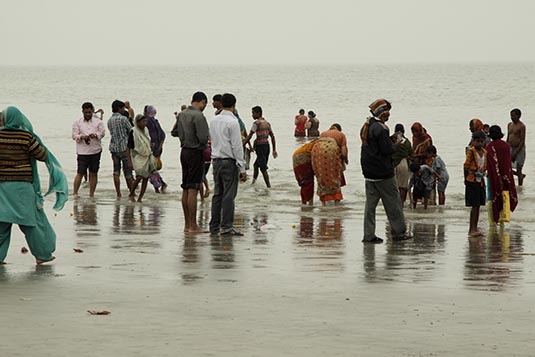 Come January 14 and hundreds of thousands pilgrims will throng this small island called Gangasagar. The human congregation is the second largest of its kind in the world- the first being Kumbh Mela (Fair). Unlike Kumbh Mela which happens once in 4 years in different parts of India, the Gangasagar Mela happens every year during Makar Sankranti which falls either on January 14th or 15th based upon the Lunar Calendar. From Makar Sankranti day, the sun begins its northerly journey transiting from Sagittarius to Capricorn. 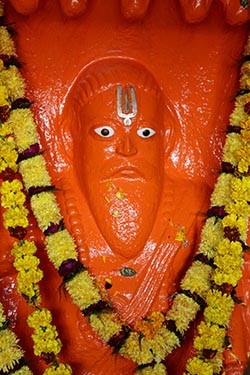 The Gangasagar Mela is held annually on the Sagar Island’s southern tip in the Ganges delta atop the Bay of Bengal. There’s a local saying “Har thirth bar bar, Gangasagar ek bar” roughly meaning that one trip to Gangasagar is more than visiting other holy places many times. Probably, the saying came about many, many years ago when it was difficult to reach the spot.
The Gangasagar Mela is held annually on the Sagar Island’s southern tip in the Ganges delta atop the Bay of Bengal. There’s a local saying “Har thirth bar bar, Gangasagar ek bar” roughly meaning that one trip to Gangasagar is more than visiting other holy places many times. Probably, the saying came about many, many years ago when it was difficult to reach the spot.
In the good old days, pilgrims had to travel by boats all the way from Kolkata. The journey lasted over 2 days. And facilities on board were minimal and mishaps plenty. Pilgrims considered themselves lucky to be back home safe. Today, reaching the island is a breeze. I was in Kolkata. And since it was early January, I thought it was a good idea to visit Gangasagar. We were two couples travelling together and therefore had a private taxi for our travels. Sagardweep (Sagar Island) is about 120 kms from Kolkata. At 90 kms is Kakdweep where one has to leave the car and take a ferry to reach the Island. Public transportation is available at regular frequencies from Kolkata. 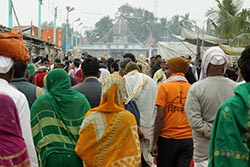 We left our hotel at 8AM. By 11AM we were at Kakdweep. Our driver dropped us at Lot 8 from where we would board the ferry. Crossing of the creek takes about 45 minutes and costs only Rs 7. The ferry crossing will send shivers down the spine of the ‘safety conscious’. Hundreds of passengers are put in the ferry. There’s no such thing as a safety drill. I guess the ferries ply with good wishes and blessings from Him.
We left our hotel at 8AM. By 11AM we were at Kakdweep. Our driver dropped us at Lot 8 from where we would board the ferry. Crossing of the creek takes about 45 minutes and costs only Rs 7. The ferry crossing will send shivers down the spine of the ‘safety conscious’. Hundreds of passengers are put in the ferry. There’s no such thing as a safety drill. I guess the ferries ply with good wishes and blessings from Him.
As soon as the ferry begins its journey, devotees from the boat throw offerings in the creek, believed to be Ganges. Typical offering include sarees and coconuts. Trained catchers on the boat quickly net the offerings… to be sold to other devotees later on. So much for the sentiments. 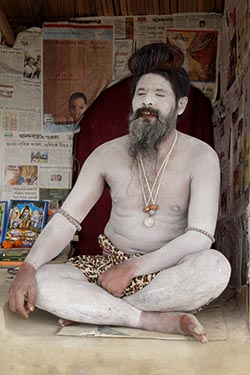 After alighting at Kachuberia Jetty on the Sagar Island we hired a vehicle to take us to the southern end of the island. The trip cost us Rs 600 one way and the journey was 32 kms. During Mela days, prices would just multiply. Buses also transport people but are stuffed to the brim.
After alighting at Kachuberia Jetty on the Sagar Island we hired a vehicle to take us to the southern end of the island. The trip cost us Rs 600 one way and the journey was 32 kms. During Mela days, prices would just multiply. Buses also transport people but are stuffed to the brim.
I was delighted to note the excellent condition of the roads on the island. Huts along the road were neatly built, each one having its own little pond alongside to breed fish. Let’s call it a kitchen pond. In fields were special enclosure created to grow paan – a leaf that’s enjoyed as a mouth freshner after meals. Supplies to the island that houses about 500,000 people can come only as boat cargo. Makar Sankranti was only a week away. The preparations to take care of the pilgrims (a million of them were expected) was in full swing. Transit camps were being built and barricades were being put up. Scores of stalls were already up hawking things devotional. Make shift eating places were ready to serve too. 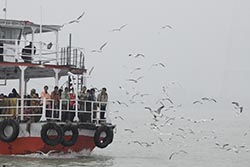 We were dropped about 500 meters from the sea shore. As per the ritual, we were to dip in the sea and then visit the Kapil Muni (sage) temple. Hundreds of pilgrims were already on the shore. I was just imagining the scene when hundreds of thousands of them would wait their turn to take the holy dip. The dip is believed to cleanse humans from their sins and give them Moksha - liberty from afterlife.
We were dropped about 500 meters from the sea shore. As per the ritual, we were to dip in the sea and then visit the Kapil Muni (sage) temple. Hundreds of pilgrims were already on the shore. I was just imagining the scene when hundreds of thousands of them would wait their turn to take the holy dip. The dip is believed to cleanse humans from their sins and give them Moksha - liberty from afterlife.
According to the legend, King Sagar of the Ikshvaku dynasty had two queens, Keshani and Sumati, but neither had a child. Sagar performed severe austerities before his wives could produce sons. Keshani gave birth to a son called Asmajas and Sumati bore 60,000 sons. Sagar performed the Ashwamedha Yagya to declare his supremacy over the neighbouring kingdoms. According to the prevalent custom, the sacrificial horse was let loose and allowed to wander into the neighbouring kingdoms. If the horse was caught, a battle ensued and the outcome decided the winner. The 60,000 sons of Sagar were following the horse when they saw him enter a cavern where sage Kapil Muni was meditating. Not seeing the horse in the cavern, they presumed that Kapil Muni had captured it. They did not kill Kapil Muni as he was a sage but they started disturbing his meditations. Annoyed at being disturbed, Kapil Muni with a curse burnt the 60,000 sons of Sagar. 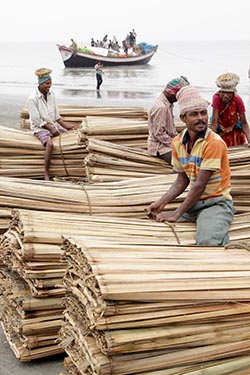 Since his sons did not return, King Sagar sent his grandson Anshumaan in search of his 60,000 sons. Anshuman traced his uncles' footsteps and arrived at Kapil Muni's Aashram. He saw a mound of ashes near his Aashram. Realising what had happened he appealed to Kapil Muni for the Mukti of his uncles. That's when Kapil Muni suggested him to bring Ganga (Ganges) on Prithvi (earth) so that the water can give them Mukti. Time passed and later Bhagiratha, the great grandson of King Sagar, brought Ganga to the earth by offering prayers to Bramha (The Creator), Vishnu (The Preserver) and Mahesh (The Destroyer) - the 3 supreme Gods of Hindu mythology.
Since his sons did not return, King Sagar sent his grandson Anshumaan in search of his 60,000 sons. Anshuman traced his uncles' footsteps and arrived at Kapil Muni's Aashram. He saw a mound of ashes near his Aashram. Realising what had happened he appealed to Kapil Muni for the Mukti of his uncles. That's when Kapil Muni suggested him to bring Ganga (Ganges) on Prithvi (earth) so that the water can give them Mukti. Time passed and later Bhagiratha, the great grandson of King Sagar, brought Ganga to the earth by offering prayers to Bramha (The Creator), Vishnu (The Preserver) and Mahesh (The Destroyer) - the 3 supreme Gods of Hindu mythology.
After spending time on the shores, we walked about a km to reach the temple of Kapil Muni. The temple premises have deities of Lord Hanuman and Lord Mahesh too. Surrounding the temples were various stalls, notably the temporary built living quarters of Naga Babas (sadhus). These babas come to Gangasagar around October and return only after Makar Sankrati. They are ardent followers of Lord Mahesh. Post lunch, which was in one of the many food joints, we began our return journey. By 8PM we were in Kolkata. Gangasagar Image Gallery  Photo viewer Photo viewer
|
|
|
Home |
Charity |
Feedback
Privacy Policy | Terms of Usage © YoGoYo.com. All rights reserved. |





























